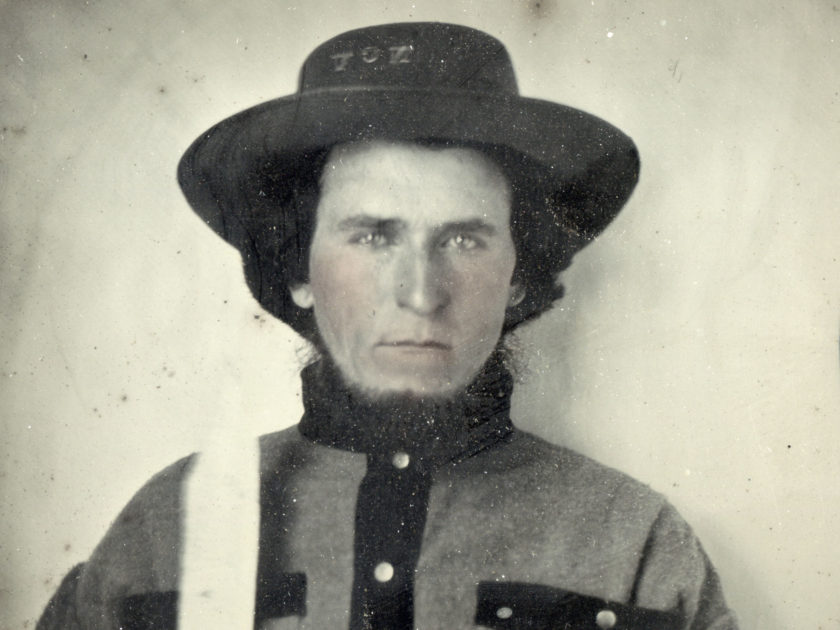




On June 30, 1862, at the Battle of Glendale, Va., Gen. James L. Kemper’s brigade of Virginians overran enemy pickets. Kemper reported what happened next, “The men seemed to be possessed of the idea that they were upon the enemy’s main line, and in an instant the whole brigade charged forward in double-quick time and with loud cheers.” The cheering attracted the attention of Union artillery, and before the day was over the brigade was driven back with heavy losses—414 casualties in five regiments. Among the killed was Pvt. Edmond R. Brown of the 11th Virginia Infantry. A Campbell County farmer prior to his enlistment in June 1861, he joined the Southern Guards, which became Company B of the 11th. During the Peninsula Campaign on May 31, 1862, Brown suffered a wound during the Battle of Seven Pines. A month later, he was killed in action at Glendale. He was about 24 years old and unmarried. His family cemetery does not include a grave for him. He likely rests with his comrades at Glendale.

The long list of casualties from the storm of musket and artillery fire that devastated Confederate Maj. Gen. George E. Pickett’s division at the Battle of Gettysburg included Zachariah Angel Blanton. A tobacconist from Cumberland County, Va., Blanton enlisted as a sergeant in the Farmville Guards less than two weeks after the bombardment of Fort Sumter. He sat for this portrait wearing a cap with the metal letters FG, and armed with a Model 1816 conversion musket. The Guards became Company F of the 18th Virginia Infantry. Before the end of his first year in uniform, Blanton traded his sergeant’s chevrons for the insignia of a first lieutenant. In 1862, he advanced to captain and company commander. Blanton fought in this capacity at Gettysburg. During Pickett’s Charge, he suffered a gunshot wound that caused massive damage to the right side of his face—a significant section of his upper jaw was destroyed and his tongue severely injured. Captured on the field of battle, he spent the next 10 months as a prisoner of war at Johnson’s Island, Ohio, and elsewhere. Blanton was exchanged in mid-1864, and retired from the service on account of his wounds. He returned to his occupation, married in 1868, and started a family that grew to include three children. He died in 1893.

The fur gauntlets, muffler and greatcoat worn by this federal indicates that he is prepared for harsh winter conditions.
SPREAD THE WORD: We encourage you to share this story on social media and elsewhere to educate and raise awareness. If you wish to use any image on this page for another purpose, please request permission.
LEARN MORE about Military Images, America’s only magazine dedicated to showcasing, interpreting and preserving Civil War portrait photography.
VISIT OUR STORE to subscribe, renew a subscription, and more.

